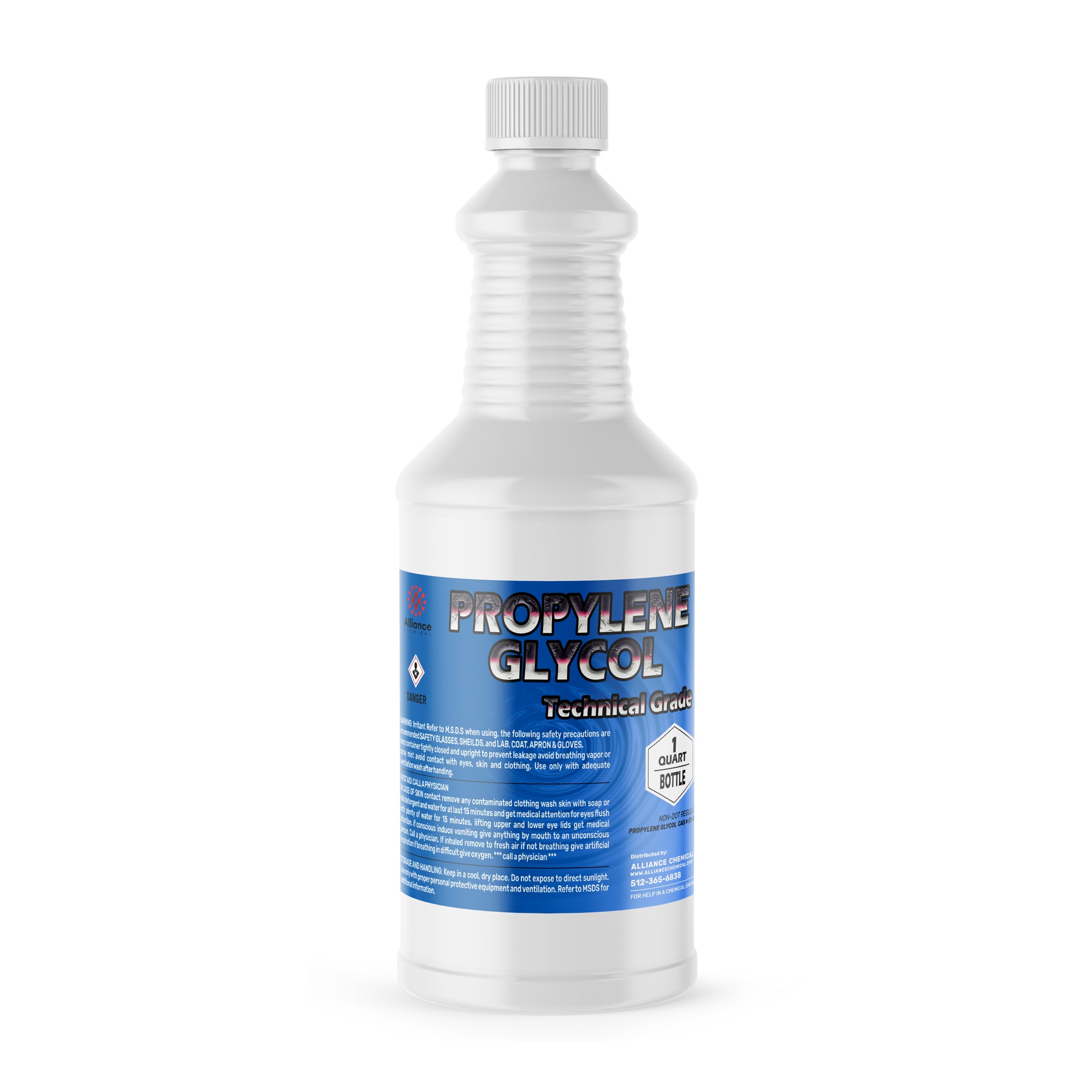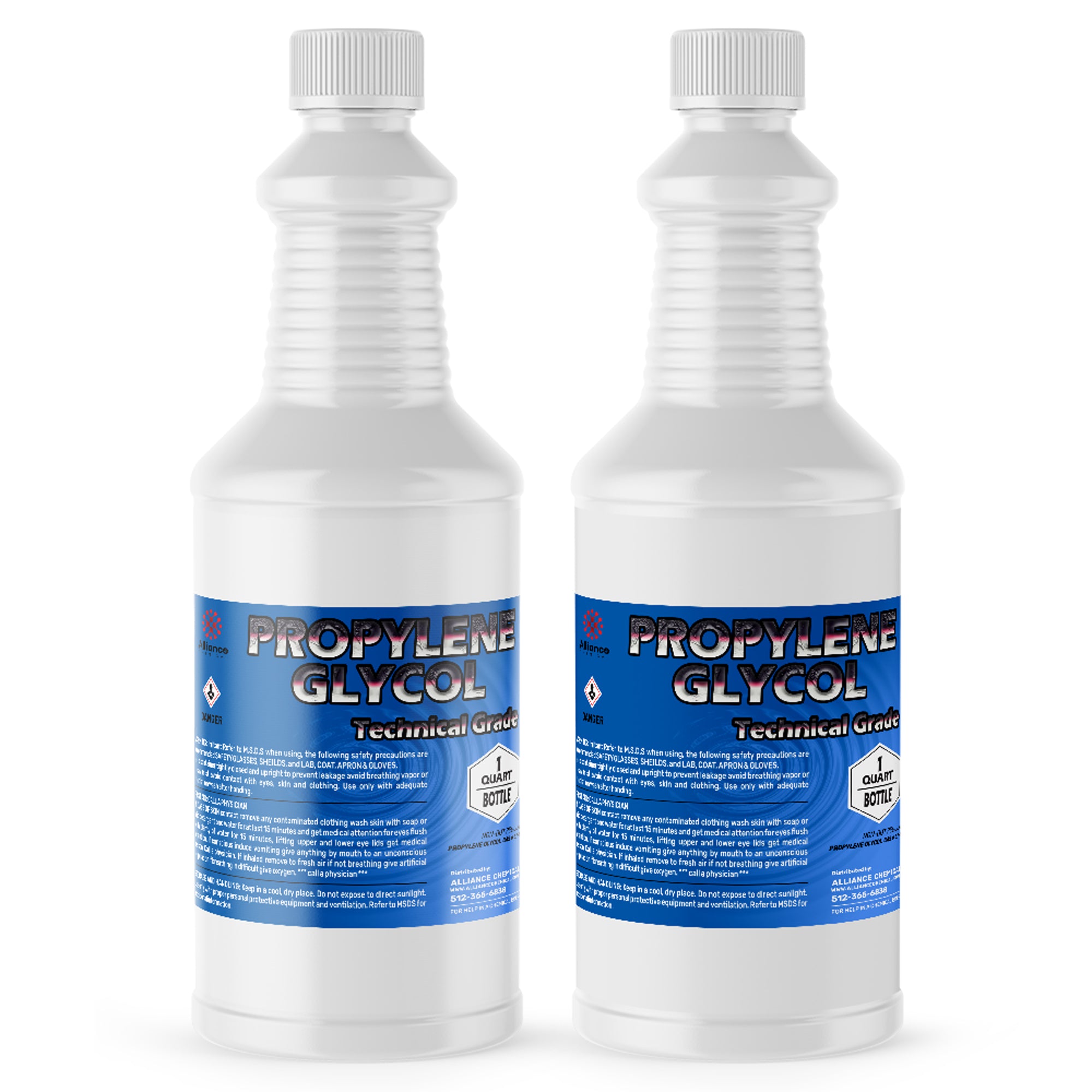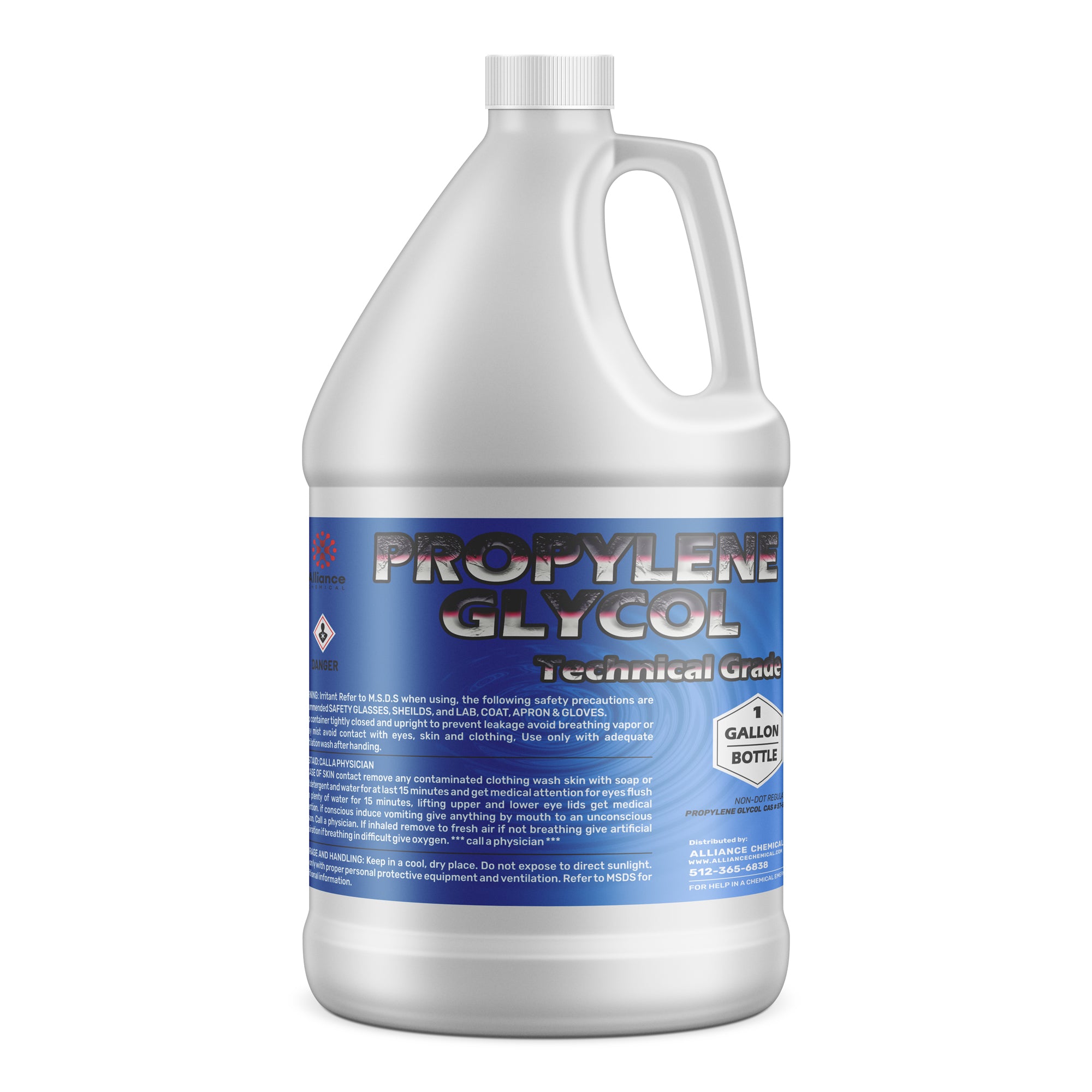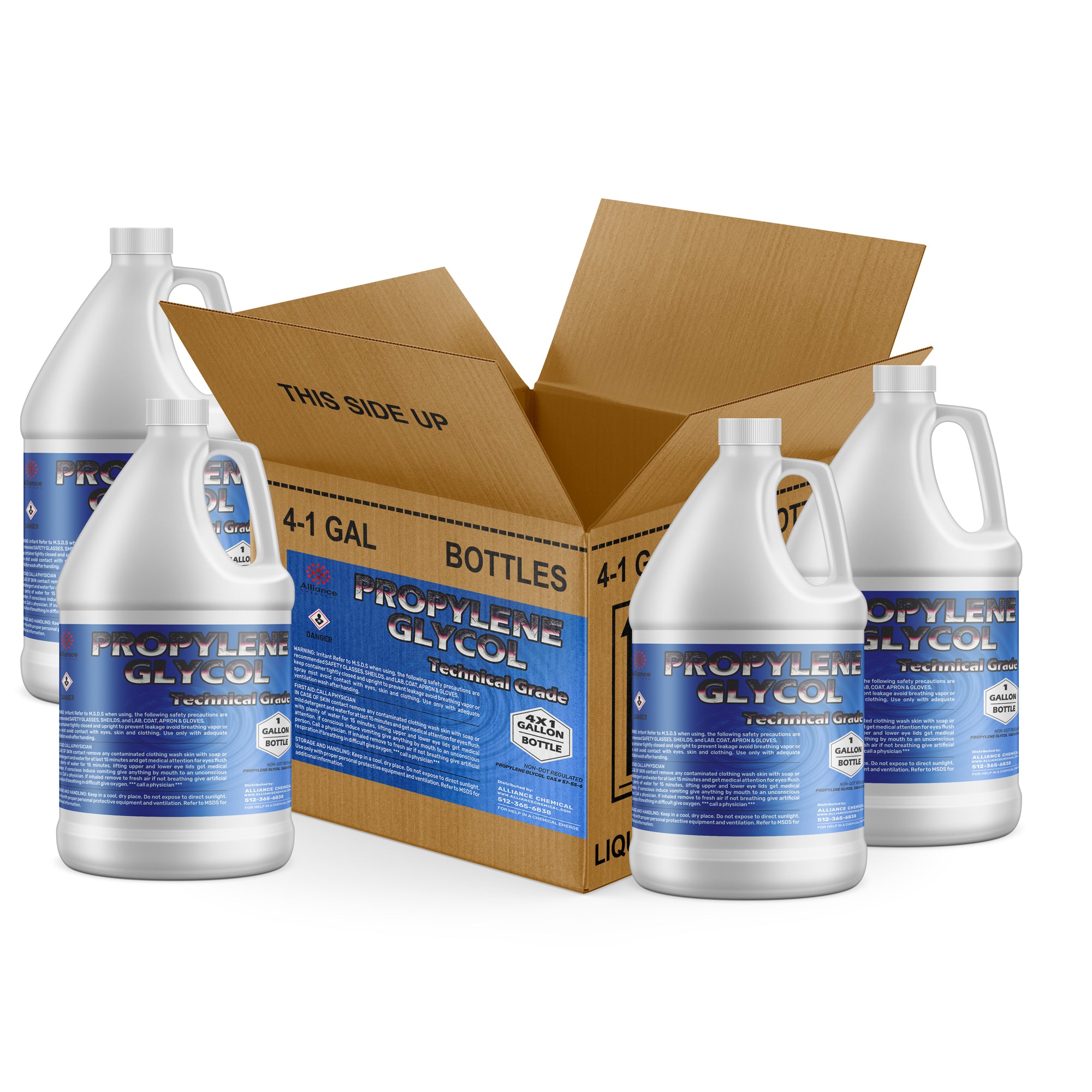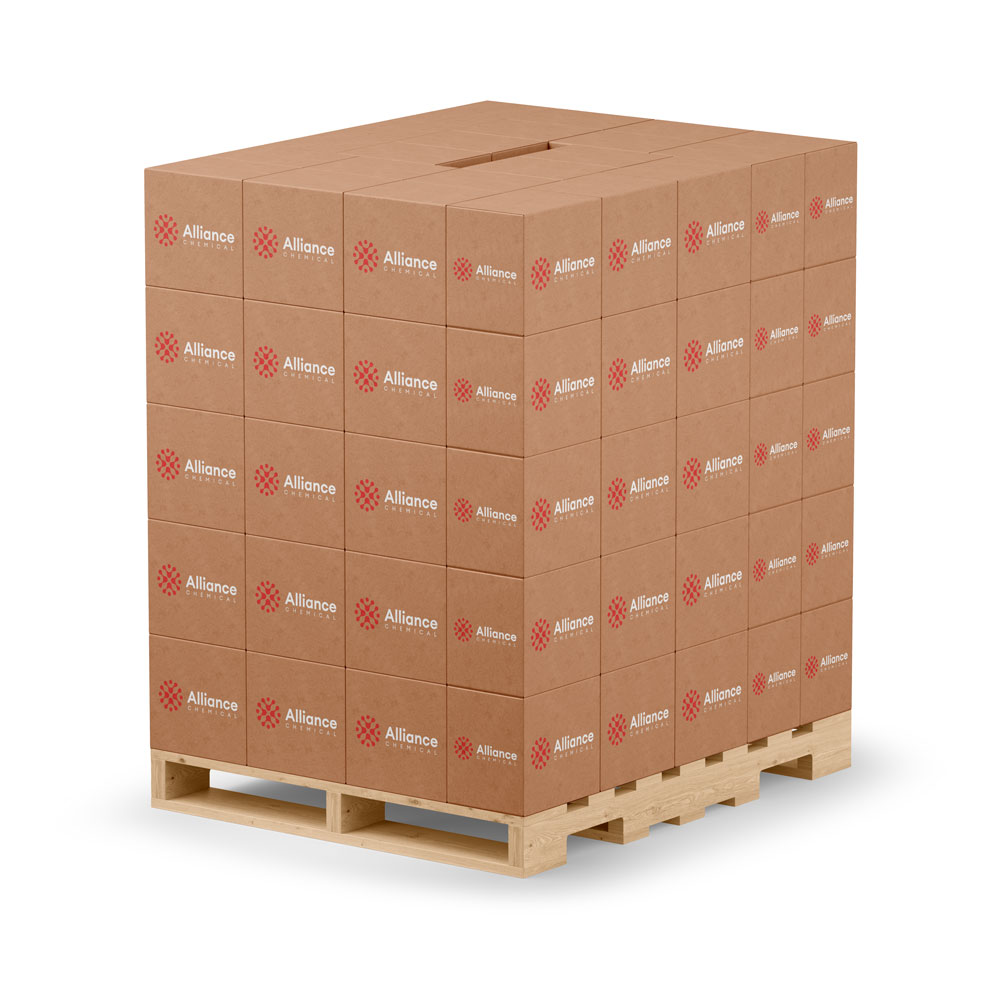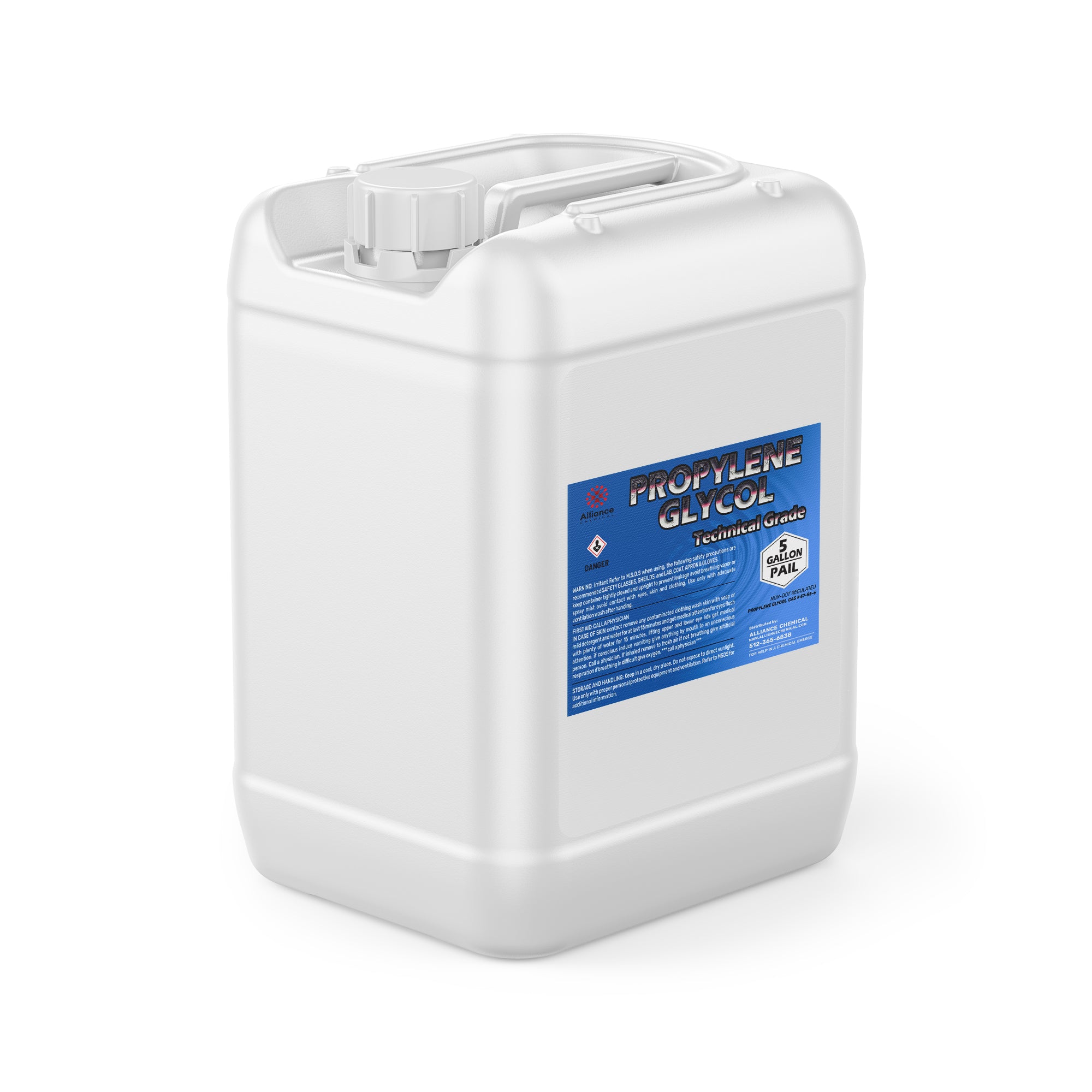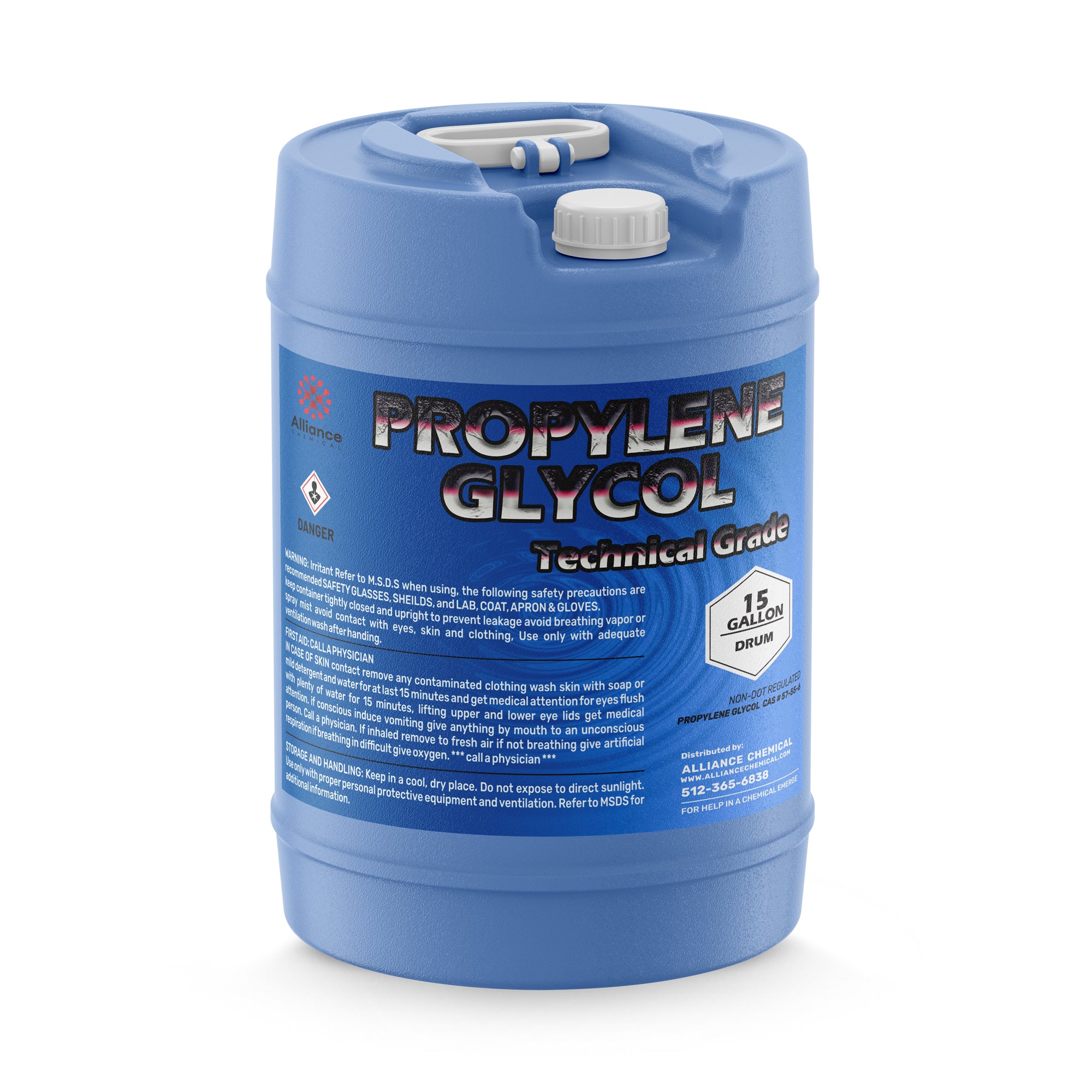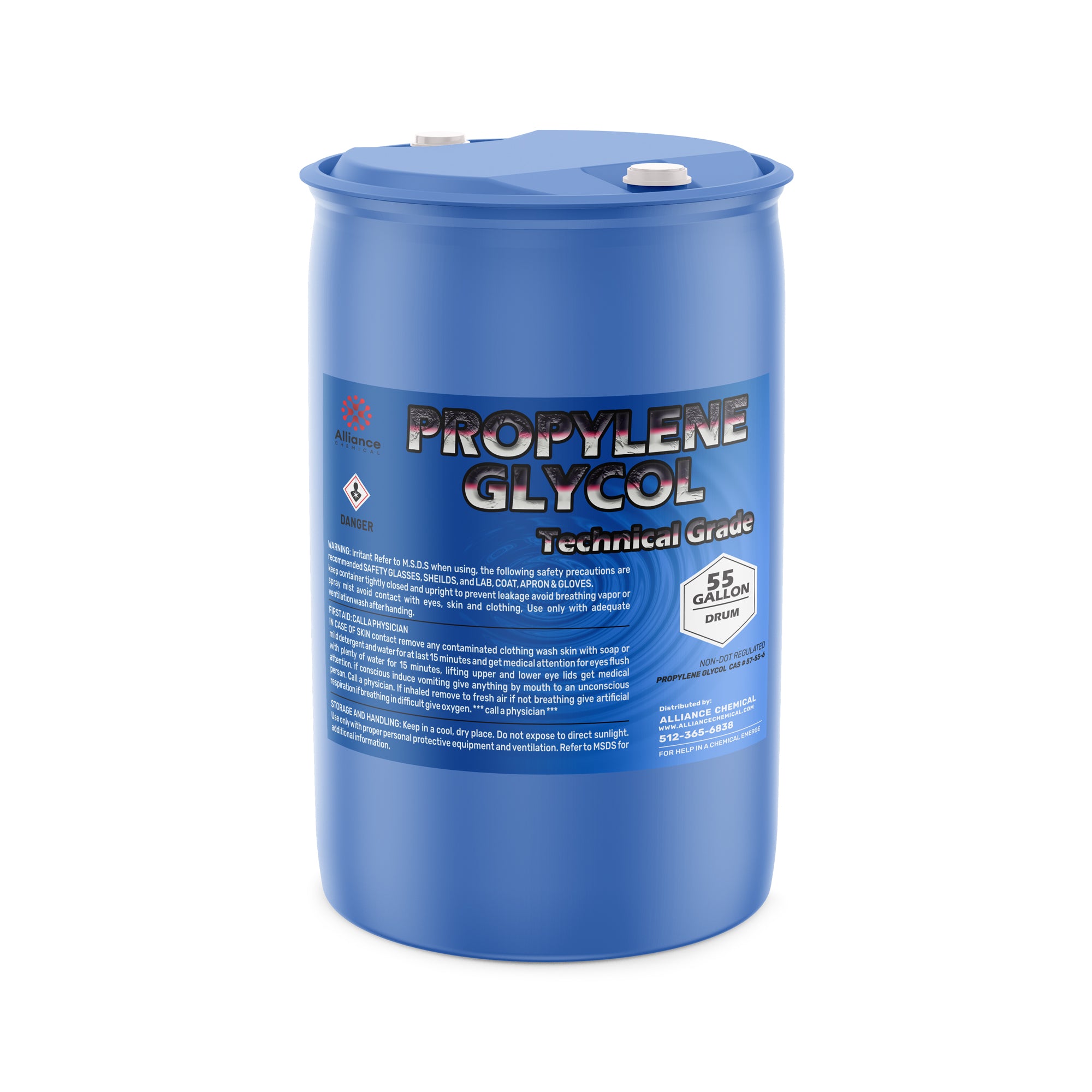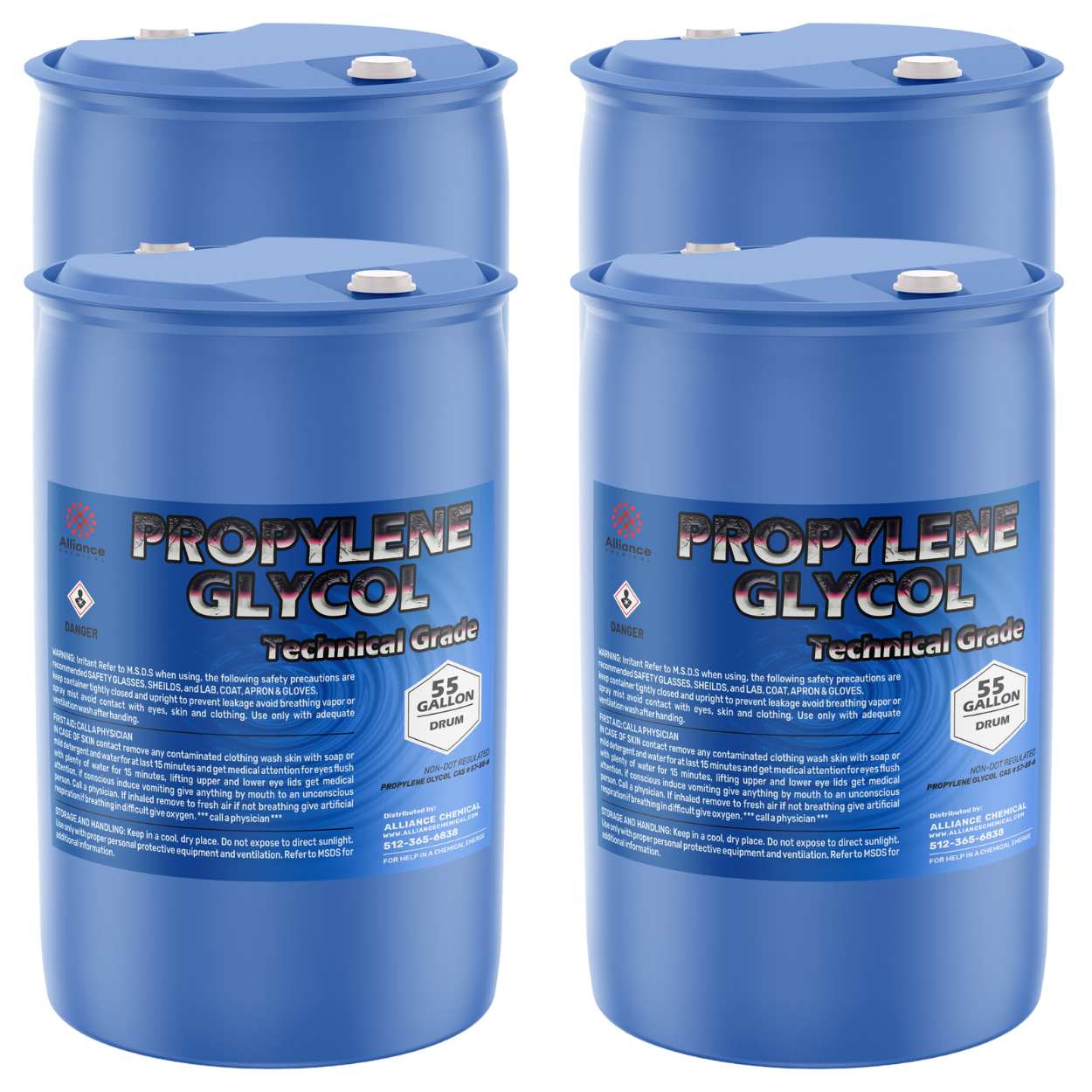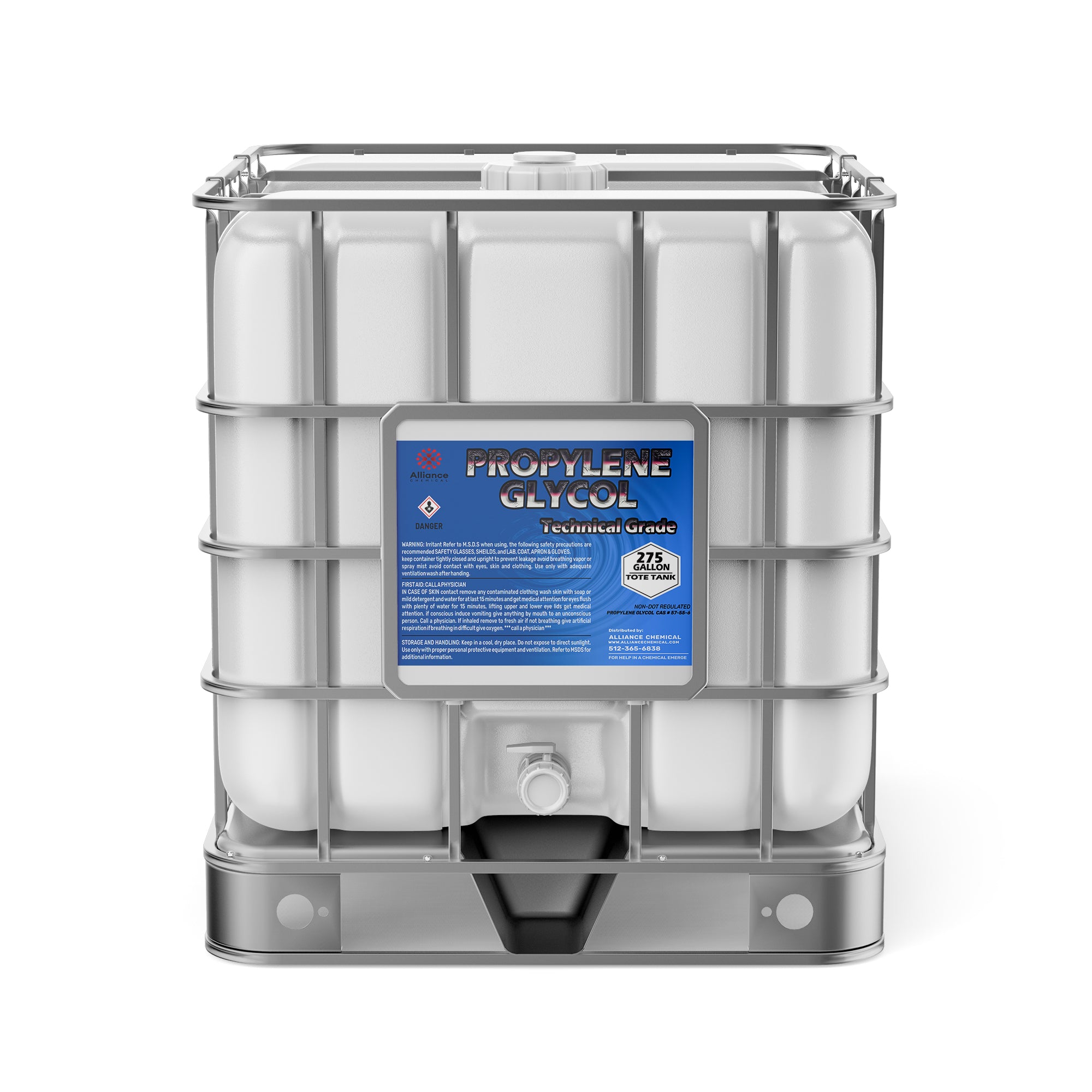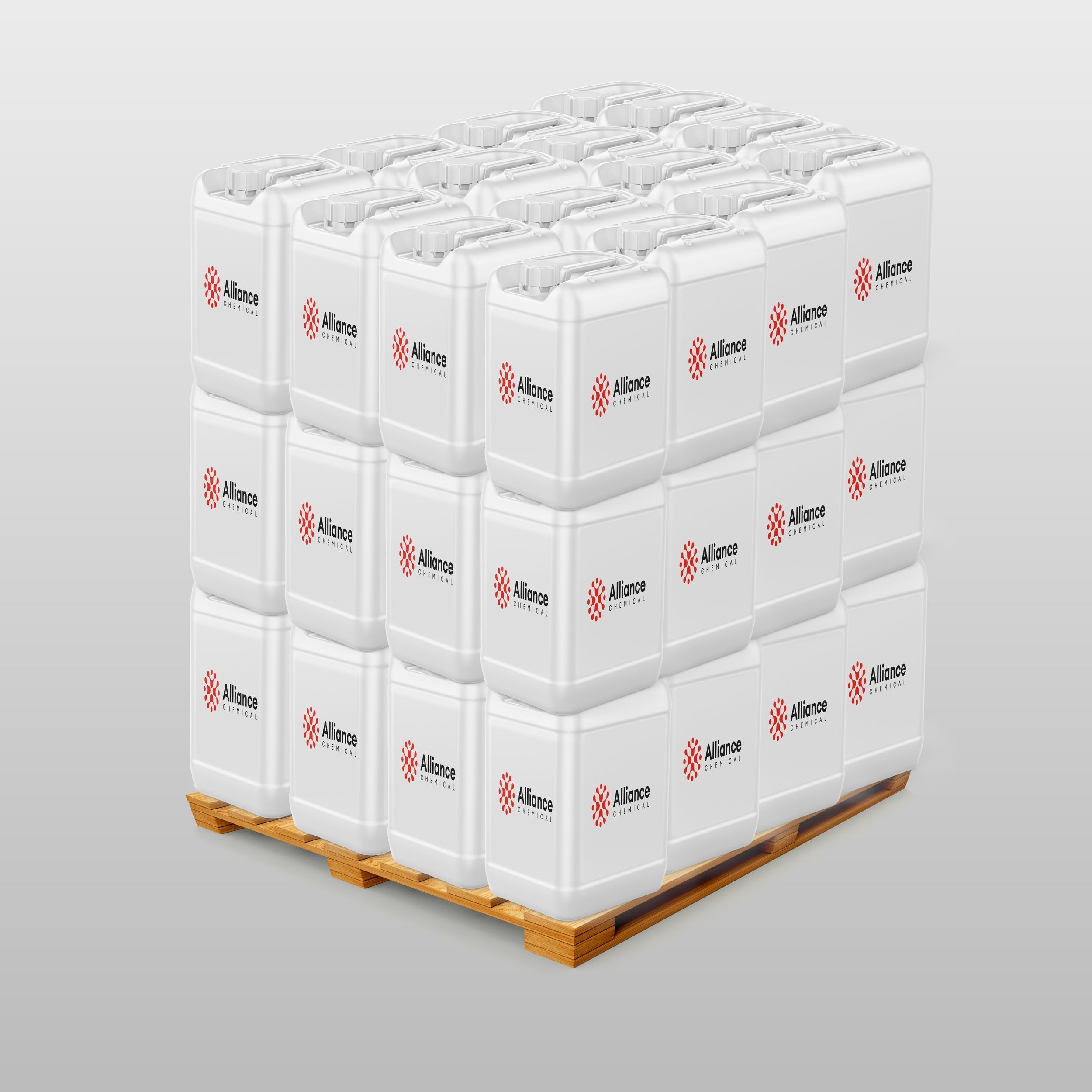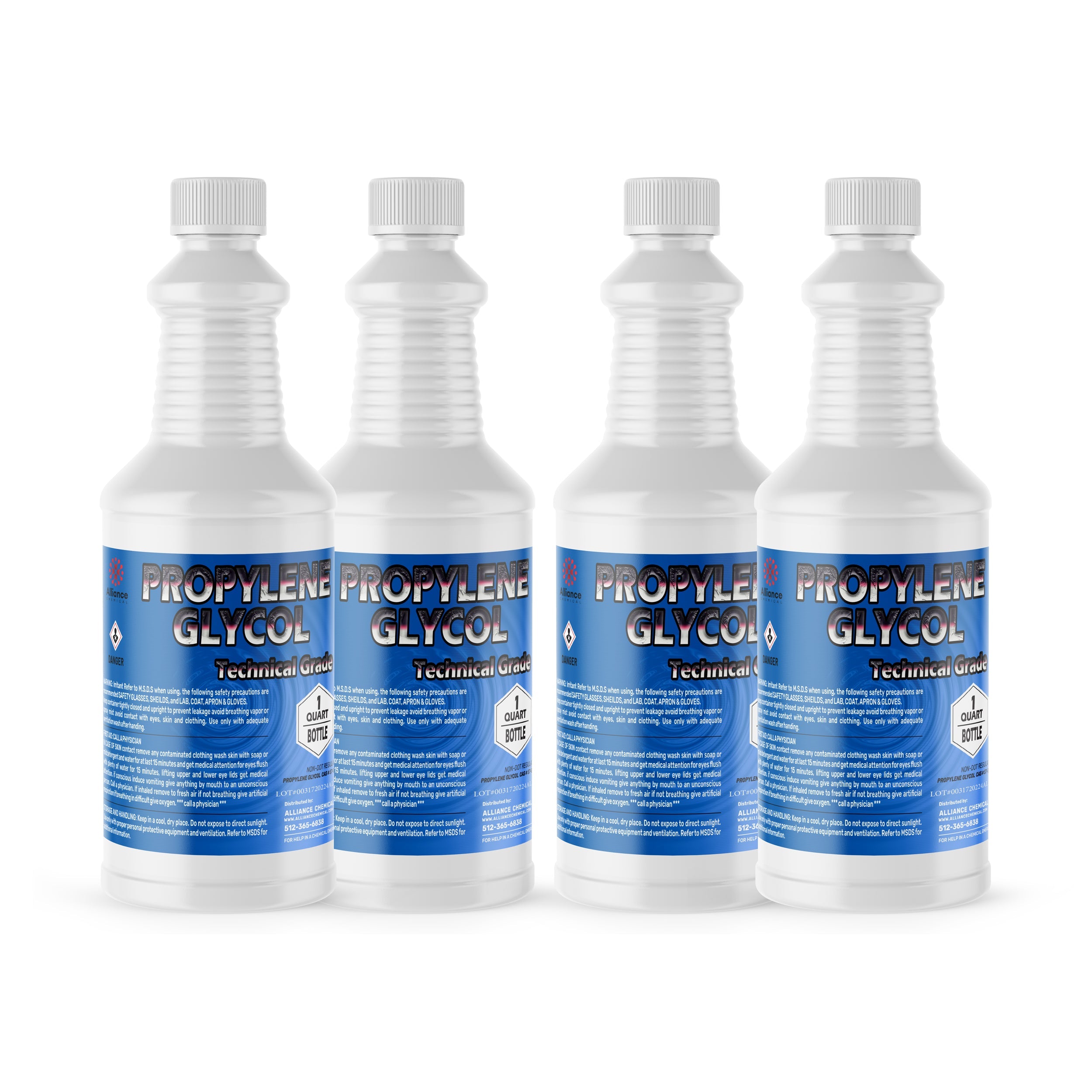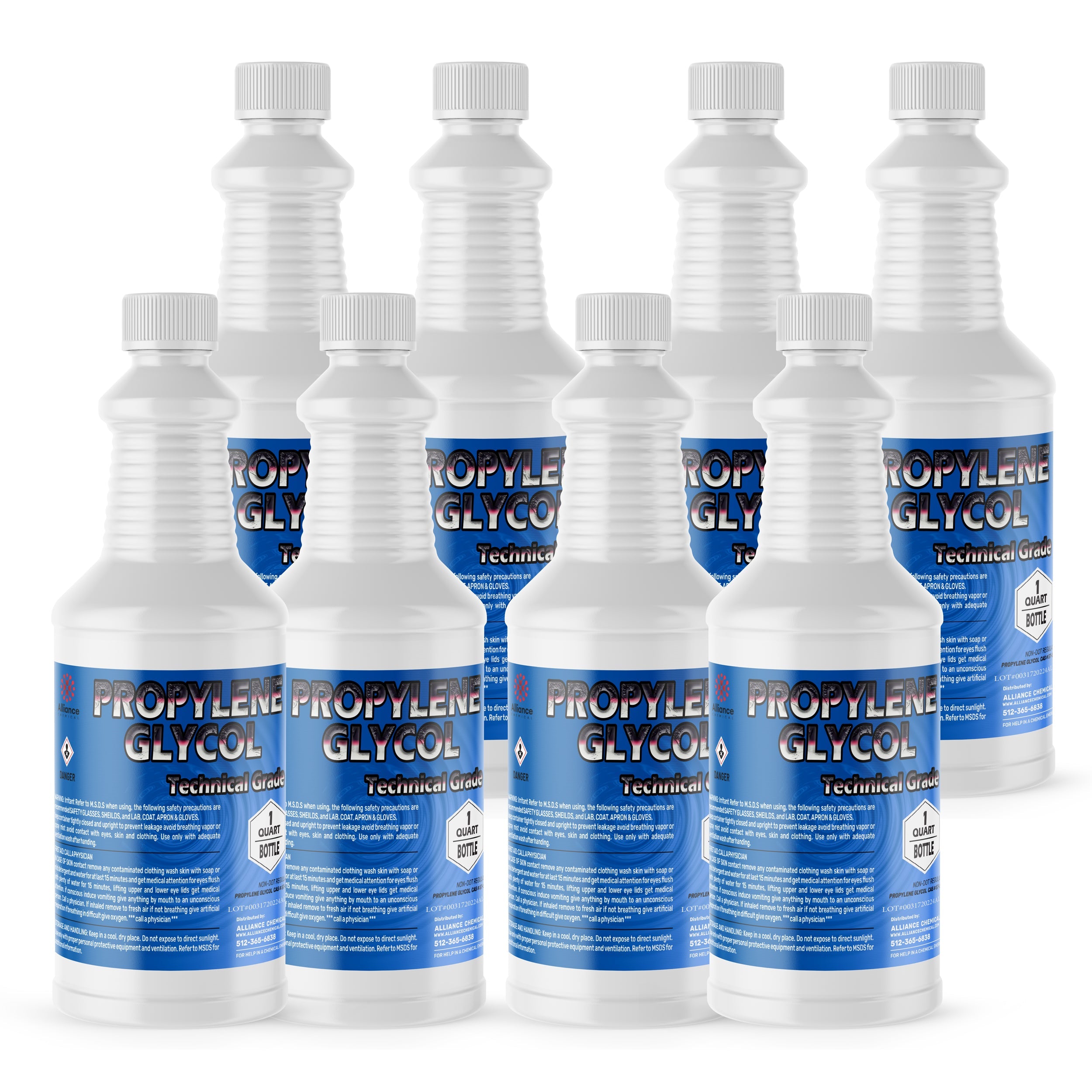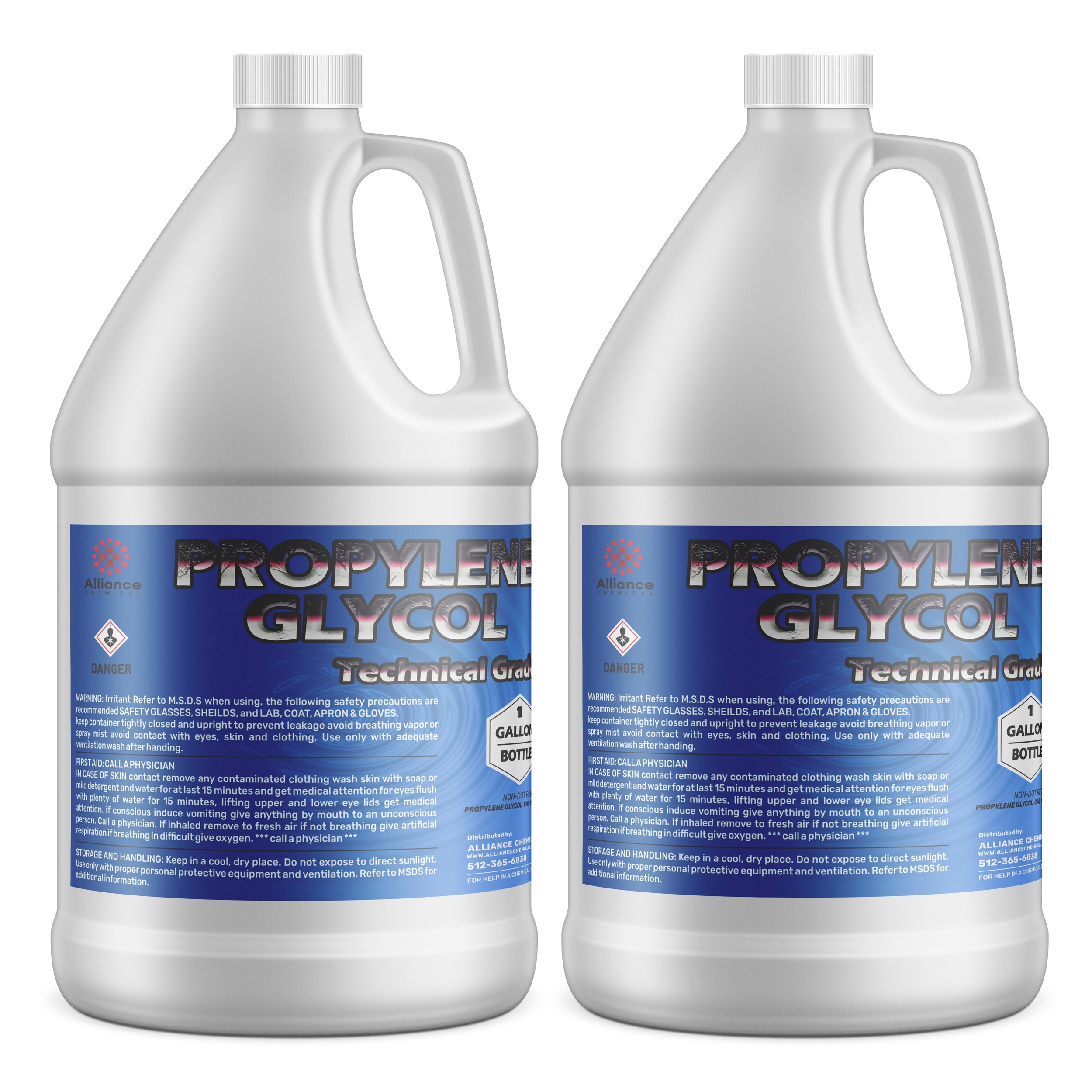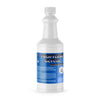Ask a question
Product Overview
Propylene Glycol Technical Grade is a colorless, odorless hygroscopic liquid with a high boiling point and low toxicity, offering excellent solubility and stability across a broad range of process conditions. With a typical assay of 99.6% and a permissible range of 99–100.5% by titration with standardized NaOH, this material delivers dependable purity for demanding applications in analytical, pharmaceutical, and industrial settings. Its clear appearance and low color (APHA/Hazen typically 2, max. 5) support consistent formulation performance, while its density around 1.037 g/mL at 20°C provides predictable mass balance in process streams. The product is compatible with water and numerous organic solvents, enabling versatile use as a solvent, humectant, and moisture-retaining component in complex formulations.
In addition to primary solvent and humectant roles, Propylene Glycol Technical Grade serves as a stable carrier fluid in high-purity systems, including HPLC mobile phase compositions and pharmaceutical solvents, where its relatively high boiling point (188.2°C) and low volatility minimize evaporation losses and cyclization risks. The material exhibits low residual impurities (e.g., chloride <1 ppm typical 0.5), very low heavy metal content, and controlled sulfurous residues, supporting compliance with USP-NF Monograph and FCC standards. Its robust performance under controlled storage conditions—cool, dry environments in HDPE or glass—makes it a reliable component across laboratories, manufacturing lines, and quality-controlled supply chains.
Key Properties
- Appearance: Clear, colorless liquid
- Odor: Slightly sweet odor
- Chemical Formula: C₃H₈O₂
- Molecular Weight: 76.09 g/mol
- Molecular Structure Notes: 1,2-Propanediol (Propylene Glycol)
- Boiling Point: 188.2°C
- Freezing Point: -59°C
- Specific Gravity (20°C): 1.036–1.038 (typical 1.037)
- Density (25°C): 1.036 g/mL
- Viscosity (25°C): 59 cP
- Refractive Index (20°C): 1.431
- Assay (wt%): 99.0–100.5% (typical 99.6%)
- Residue on Ignition: ≤ 0.1% (typical 0.05%)
- Chloride (ppm): ≤ 1 (typical 0.5)
- Nitrate NO₃⁻ (ppm): ≤ 3 (typical 1)
- Ammonium NH₄⁺ (ppm): ≤ 2 (typical 1)
- Sulfate SO₄²⁻ (ppm): ≤ 5 (typical 2)
- Phosphate PO₄³⁻ (ppm): ≤ 5 (typical 2)
- Arsenic As (ppm): ≤ 0.5 (typical 0.1)
- Heavy Metals as Pb (ppm): ≤ 5 (typical 1)
- Iron Fe (ppm): ≤ 0.5 (typical 0.05)
- Copper Cu (ppm): ≤ 0.2 (typical 0.05)
- Manganese Mn (ppm): ≤ 0.2 (typical 0.05)
- Nickel Ni (ppm): ≤ 0.2 (typical 0.05)
- Lead Pb (ppm): ≤ 0.2 (typical 0.05)
- Zinc Zn (ppm): ≤ 0.5 (typical 0.1)
- Aluminum Al (ppm): ≤ 0.5 (typical 0.1)
- Chromium Cr (ppm): ≤ 0.2 (typical 0.05)
- Cobalt Co (ppm): ≤ 0.2 (typical 0.05)
- Calcium Ca (ppm): ≤ 20 (typical 5)
- Magnesium Mg (ppm): ≤ 15 (typical 5)
- Potassium K (ppm): ≤ 150 (typical 40)
- Sodium Na (ppm): ≤ 50 (typical 20)
- Water Content: ≤ 0.5% (Karl Fischer)
- Acidity (meq/kg): ≤ 0.1 (typical 0.05)
- Aldehydes: ≤ 20 ppm (typical 5)
- pH Range (aqueous): Not specified; formulation dependent
Common Applications
- HPLC Mobile Phase: Used as a solvent component in reversed-phase chromatography to improve solubility of organic compounds and stabilize mobile phase composition for consistent retention times and peak shapes.
- Humectant in Food Products: Moisture-retaining agent that helps preserve texture and stability in baked goods, confectionery, and dairy applications compatible with food-grade standards.
- Solvent for Pharmaceuticals: Carrier solvent for active ingredients and excipients, supporting solubility, stability, and uniform dispersion in dosage forms.
- Antifreeze Agent (Industrial): Lowers freezing point in cooling systems and automotive applications, providing freeze protection and viscosity management in process fluids.
- Cosmetic Ingredient: Skin-conditioning solvent and humectant in moisturizers, gels, and serums, aiding dispersion of actives and improving texture.
Safety Precautions
Handle Propylene Glycol Technical Grade under controlled conditions to minimize exposure and contamination. Store in a cool, dry place away from direct sunlight in materials compatible with propylene glycol (HDPE or glass). Maintain proper ventilation and use appropriate PPE, including gloves and goggles, to prevent skin and eye irritation during handling. Follow standard industrial hygiene practices, implement spill control measures, and ensure secondary containment where needed to avoid environmental release.
In case of exposure, refer to the SDS for first-aid guidance. Eyes: flush with plenty of water for at least 15 minutes and seek medical attention if irritation persists. Skin: wash with soap and water; seek medical advice if irritation develops. Inhalation: move to fresh air; seek medical attention if symptoms persist. Ingestion: do not induce vomiting; seek medical attention immediately. Transport: UN 3082, Environmentally hazardous substance, liquid, n.o.s., Class 9, PG III.
Benefits
✔ High Purity and Standardized Quality – Meets USP-NF Monograph and FCC standards, ensuring reliable performance in pharmaceutical, food, and analytical applications.
✔ Excellent Solvent and Humectant Properties – Wide compatibility with water and organic solvents, stable across processing temperatures and formulations.
✔ Controlled Impurity Profile – Low heavy metals and trace impurities support compliance with stringent industry requirements and environmental safety.
| Property | Value |
|---|---|
| Molecular Weight | 76.09 g/mol |
| Formula | C3H8O2 |
| Assay | 100% |
| Flash Point | 104 |
| Form | Liquid |
| Solubility | Highly water-soluble, miscible with organic solvents |
| Appearance | Clear, slightly viscous colorless liquid |
| Melting Point | -59 °C |
| Boiling Point | 188 °C |
| Industry | Industrial, Chemical Manufacturing, Research, Materials Processing |
E9C-2NE-L4B
$19.04
Unit price
Compare Products
| Price |
|---|
| SKU |
| Rating |
| Discount |
| Vendor |
| Tags |
| Weight |
| Stock |
| Short Description |

